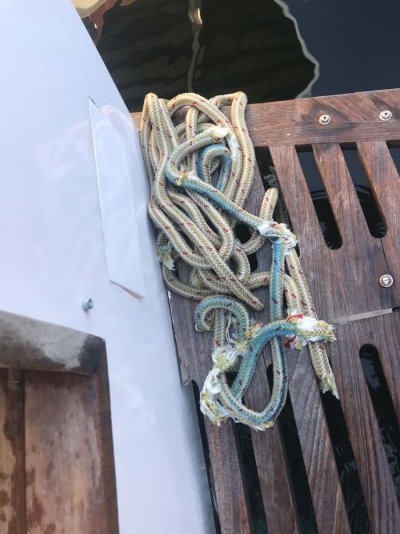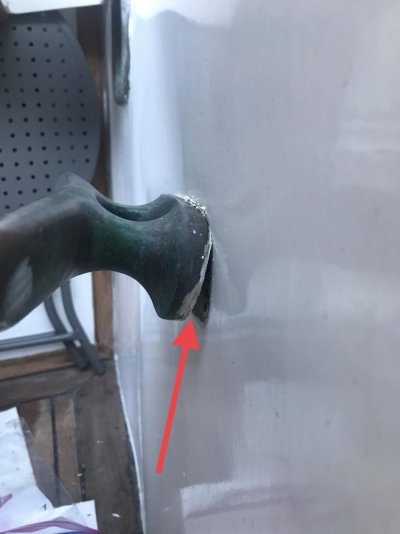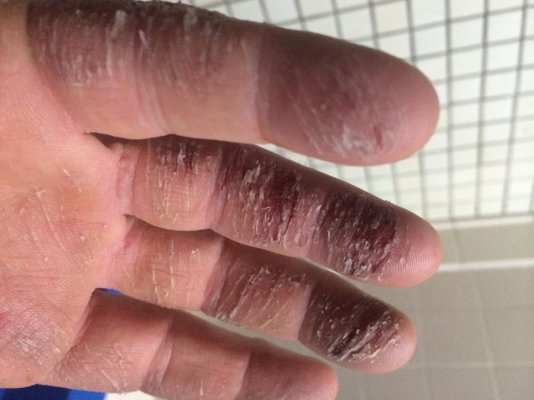Airstream345
Guru
- Joined
- Jul 3, 2017
- Messages
- 1,015
- Location
- United States
- Vessel Name
- FORTITUDE
- Vessel Make
- Kadey Krogen 54-8
This is one of those things I’ve been told everyone does sooner or later. For me it was sooner and I was lucky enough to be in my slip when it happened.
After finishing up a complete fuel filter service on our twin Lehman’s I was running each engine in gear, one at a time, in the slip to get them up to temp and ensure no air was in the fuel system.
Port engine went well with no issues. I started the starboard engine and after a short idle I put her in gear, immediately hearing a cracking sound and the engine died.
Shut everything off at the helm and ran down to check things. The starboard stern line, which I had nearly piled up on the rail the day before to get it out of the way of some outboard maintenance had fallen into the lake and wrapped itself around the prop.
With an old pair of diving goggles I found onboard and a trusty Gerber knife in hand I proceeded to remove/saw the line off the prop. BTW - holding your breath at 49 is much harder than it was at 29. [emoji6]
Fortunately there was no damage to the prop or shaft and no vibrations up to 1500 rpm. I’ll sea trial it this weekend.
The crack was the sound of the cleat pulling up 1/4 from the gunwale. Fixable but one more thing added to he list before we leave for the San Juan Islands.
This one was totally my fault but It’ll guarantee I’ll never put her in gear without checking the lines again.


After finishing up a complete fuel filter service on our twin Lehman’s I was running each engine in gear, one at a time, in the slip to get them up to temp and ensure no air was in the fuel system.
Port engine went well with no issues. I started the starboard engine and after a short idle I put her in gear, immediately hearing a cracking sound and the engine died.
Shut everything off at the helm and ran down to check things. The starboard stern line, which I had nearly piled up on the rail the day before to get it out of the way of some outboard maintenance had fallen into the lake and wrapped itself around the prop.
With an old pair of diving goggles I found onboard and a trusty Gerber knife in hand I proceeded to remove/saw the line off the prop. BTW - holding your breath at 49 is much harder than it was at 29. [emoji6]
Fortunately there was no damage to the prop or shaft and no vibrations up to 1500 rpm. I’ll sea trial it this weekend.
The crack was the sound of the cleat pulling up 1/4 from the gunwale. Fixable but one more thing added to he list before we leave for the San Juan Islands.
This one was totally my fault but It’ll guarantee I’ll never put her in gear without checking the lines again.


Last edited:




